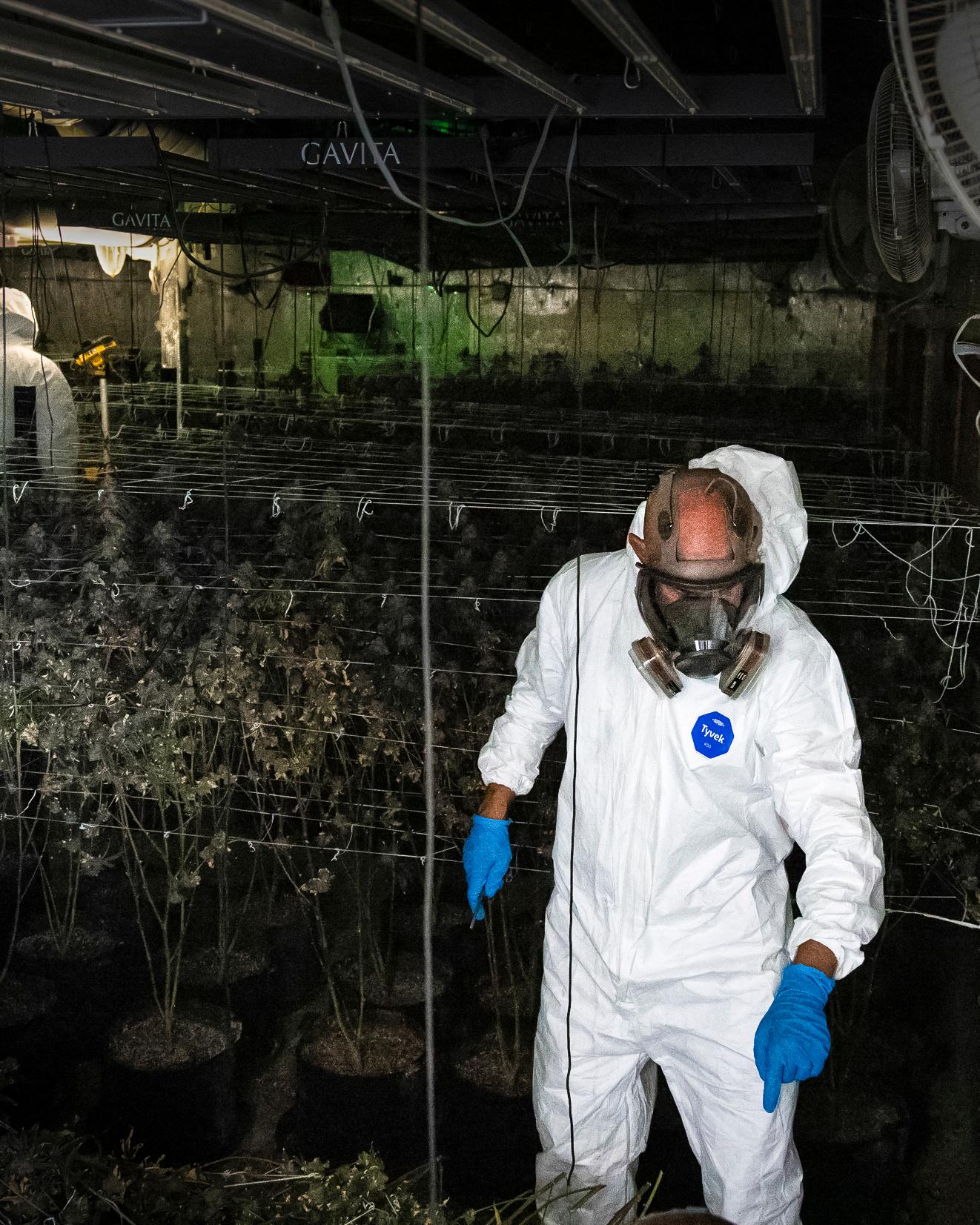LOS ANGELES—On a recent summer morning, a caravan of unmarked state police vehicles and white hazmat trucks crept past strip malls and wide intersections, making its way toward a pair of modest homes in a remote suburb north of Los Angeles.
A command came from the officers in the front of the black-and-white vehicles: “Seat belts off—in case we start taking fire.”











